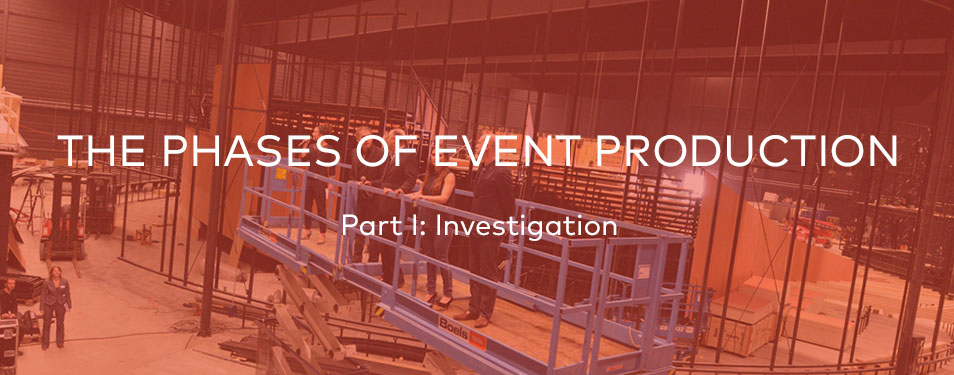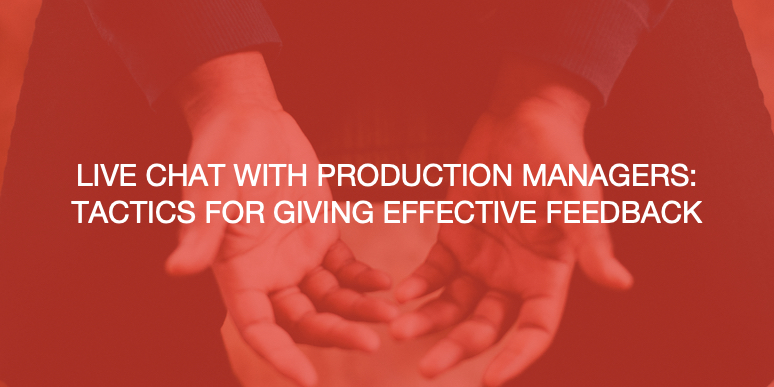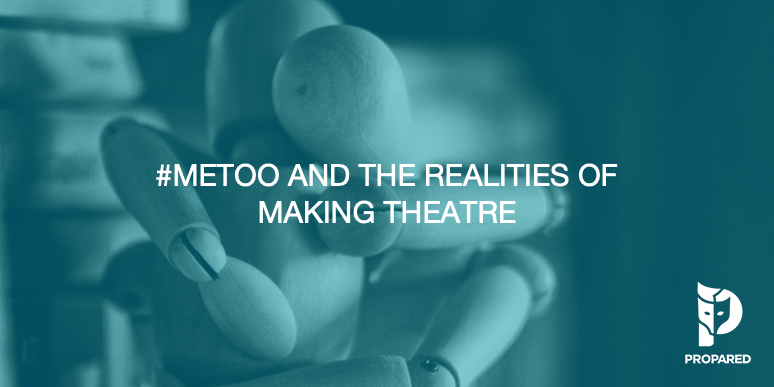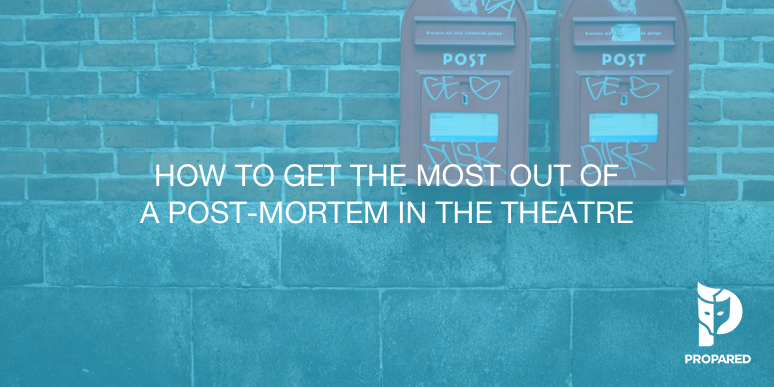
No matter how a project comes to you, whether it is brought to you at the beginning or somewhere mid-project, it’s critical you spend time laying some groundwork first. Why is this so important? Simply put, the event industry moves fast. Once a job is secured, we often need to go, go, go and there is always more to do than time available. So, it makes sense that some crucial steps may be missed. These mistakes are most likely to happen during this early investigation period. By taking the time to look at the components that go into this all important phase, we can save ourselves major headaches once event production really gets going.

1. Requirement Gathering
Before a single call is made or design floated, we must understand the goals of the client and the pieces involved in a project. This sets the tone for the entire process. In fact, studies have shown that 70% of project failures can be attributed to mistakes made when gathering requirements. Getting this step right could be the difference in producing a successful event! Once you know your client’s intent and overall aim, you can set about establishing a consistent direction. Ask lots of questions! Here’s a few examples:
- What is the purpose of the event?
- What do you want the tone or emotional state of the audience to be during the event?
- At the end of the event, what you do want the attendees to say, think, or feel?
- What is the budget?
- What are the Times, Dates, and Locations?
- What are the technical elements and vision for the event?
- What other departments will be involved and who is leading them?
The answers you get can provide you a ton of information. What team members or freelancers would be best, what working style is your client most likely to respond to, how familiar with event planning he or she is, and what is ultimately most important.
Next, write out a brief synopsis of everything you’ve collected, including any specific details. Make sure to include your role, and the services you’ll be providing. And it doesn’t have to be long (I did say brief, right?). A few sentences in an email should do. The goal here is to ensure that the investigative work you are about to dive into is based on common assumptions.
2. Site Survey
Once you know what the event will entail, it’s time to do a site survey! Even if you’ve worked in a venue before, it’s always good to go again with a new project. If you’ve got your designers in tow, even better. This is your moment to make sure that reality fits with the vision. Take photos, measure doorways, and track load-in paths. Double check that any drawings you’ve got match the dimensions of the room. I can’t tell you how many times I’ve seen drawings that say “To Scale” are most definitely NOT. Doing a site survey can often save you from having to do triage later.
When inspecting the space, pick the brain of the venue manager. They know the place inside and out and likely have the type of information you can’t find on a schematic. Ask them questions, like:
- What/Who will be in the venue before and after my event?
- Are there overlaps? will I be sharing the loading dock or street parking space?
- What are the quirks of the venue?
- Does the power like to go out when there is a rainstorm?
- Does the fire alarm go off when hazers are used?
- What are the venue rules?
- Are you allowed to put tape on the walls, or drill into the floor?
The venue is a facility that has to be around for years to come. What does this mean? That event managers need to treat it NICELY! Understand the “room rules” when making your decisions. Damaging the venue not only creates a bad relationship between you and the facility but also might ruin it for other event managers down the line. One less usable space affects everyone. Treat the venue well and it will be your best friend. And in the event world, best friends are everything.
3. Quote & Initial Budget
Now it’s time to put numbers to everything. Based on your site survey and initial scope of work, the client needs to know how much is it all going to generally cost. But you’ve got to know how to budget an event pretty accurately. How can you do this? Send out for preliminary quotes. This gives you and the client some options and you can use the multiple quotes to provide an average. Most vendors are happy to give you these estimates based on even rough requirements. Make sure to include padding for changes too, so as to temper the expectations of the client. There’s nothing worse than quoting low and not being able to meet the figure. Better to give yourself some room and wow the client when you come in under budget! I find it’s easier to air on the side of transparency. I build my quotes with as much detail as I can. It makes it easier to explain add-on costs once the client starts asking for things outside of the original scope.
Now that your assumptions have been checked and verified with the client, your site survey done, and your initial estimates built, its time to ship it off to the client for approval! Next comes the really fun part: pre-production.
Event managers – what is important to you when scoping a project? Let us know in the comments below.



